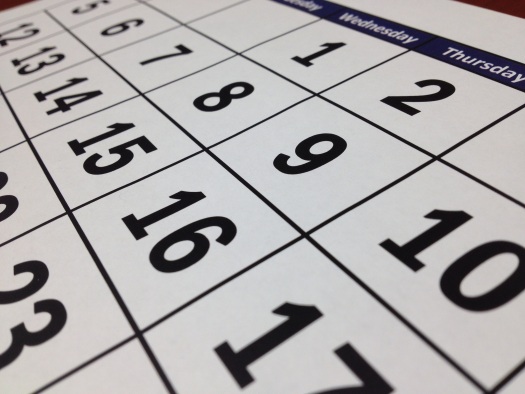In college, my roommate and I joked that everyone became a runner each spring. People who never seemed to work out were all of a sudden donning running shoes and shorts and hitting the pavement. On beautiful spring days, the formerly abandoned lakefront park next to campus was filled with runners of all ages, shapes, and sizes.
Running is one of the most widely-practiced forms of exercise. It’s often held up as the gold standard of health and fitness – if you can’t run, are you really in shape? Running is a great way to get outside and enjoy sunshine and warm weather. And many people choose to enter races as a way to get their butts in gear and motivate them to exercise more regularly.

However, despite what you read in magazines and hear from your runner friends, running is not an easily accessible activity for many people. If you’re overweight, out of shape, or riddled with muscle imbalances, jumping into a running program without any preparation can lead to pain and injuries. One of the best ways to counteract these risks is to ensure you’re following a smart strength training program to complement your running.
Full disclosure: I’m not a big fan of running myself. Running has never felt good to me and I prefer to do my longer cardio on a bike or in a pool. However, I’ve trained dozens of runners over the years. I’ve helped multiple people remain healthy and feel strong while training for marathons, iron mans, and other long races. I’ve also helped people stay safe as they experiment with running for the first time or after a long hiatus. This article shares my thoughts on what four areas all runners should prioritize in the weight room.
Mobility
I know, I know. Mobility work is about as exciting as watching grass grow. However, with any physical pursuit, it’s important to ensure your body is moving as it should before you place it under load or stress. A good warmup gets your joints moving, activates key muscles you’ll need for training, raises your body temperature, primes your nervous system, and helps you connect all the different pieces of your body together.
A common misconception among runners is that static stretching is the best way to prevent injuries. In reality, static stretching isn’t very helpful. It feels good in the moment but does little to actually loosen you up or protect your body.
Instead of static stretching, focus on dynamic stretching. Dynamic drills are essentially moving stretches. This kind of work allows you to actually own and control various ranges of motion.
A good warmup should take 5-15 minutes. Start on the floor and work your way back to standing. I recommend all runners perform drills to warm up their ankles, hips, and glutes. I’ve included some of my favorites below. If you are dealing with super tight muscles or pain, you may also want to include a few minutes of foam rolling before you begin the rest of your warmup.
Posterior Chain
The posterior chain includes the muscles on the back side of your body. For our purposes, we will focus on the glutes, hips, and hamstrings. Building strength in these muscles is absolutely essential to keep you feeling healthy and strong as you increase your running mileage.
Many runners are quad-dominant. This means they use the muscles on the front side of their legs for everything. These muscles get very strong and tight, while the hamstrings, hips, and glutes stay weak. Over time this imbalance puts unnecessary wear and tear on the hip, knee, and ankle joints, leading to pain or injuries.
I recommend three steps to train your posterior chain. First, learn how to hip hinge. After you’ve mastered this fundamental movement, you can progress to more advanced hip hinge exercises like deadlifts, kettlebell swings, and good mornings.
Next, do some direct training for the glutes. The glutes are the biggest muscle in the body and the source of much of your power. There’s a reason why the world’s fastest sprinters all have big butts. I love weighted hip thrusts and glute bridges to directly train the glutes. You can load these exercises up with bands, barbells, and smaller weights.
Finally, include some leg curls in your weekly training program. Strong hamstrings will help prevent hamstring strains, especially if you’re going to be sprinting. Beginners should perform leg curls using a swiss ball. As you get stronger, experiment with leg curls using sliders and the TRX. Eventually, most runners should add in some weighted leg curls using a machine.
If you think you may be quad-dominant, I recommend laying off quad-focused exercises for a little while. Exercises like leg extensions, leg press, and even squats (performed without proper hip involvement) can reinforce bad habits and imbalances. For now, learn to use your hips properly and build strength in the exercises mentioned above.
Single-leg
Running happens on one leg at a time. Training in a single-leg stance ensures you have the strength and stability necessary to support yourself and safely absorb forces as you run.
Keep a few form tips in mind with any single-leg exercise. Always keep your knee in line with your toe. Think about pushing your knee out to the side if you struggle with this. Always drive through your heel and squeeze your butt hard at the top of each rep. This helps you turn on your glutes.
If you’re new to single-leg training, start with split squats and step ups. Next, progress to reverse lunges. Finally, try your hand at more advanced exercises like walking lunges, rear-foot elevated split squats, and single-leg squats.
Perhaps the best single-leg exercise for runners is the single-leg Romanian deadlift. This exercise is a double-whammy as it allows you to train on one leg and train your posterior chain. I frequently use this exercise with clients dealing with knee pain, but just about everyone should include some variation of it in their training.
Core training
The final piece of the puzzle is core training. Runners should include a healthy dose of anti-core exercises in their weekly training. Anti-core exercises train you to keep your torso stable as you move the rest of your body. This is exactly the way your core functions as you run.
There are three categories of anti-core exercises: anti-extension (resisting arching your back), anti-rotation (resisting side-to-side rotation), and anti-lateral flexion (resisting side-to-side bending).
Read More: Core Training Beyond Crunches
If you’re going to focus on just one type of core movement as a runner, focus on anti-rotation. Good running form requires you to resist twisting from side to side as you swing your arms. If your core is weak, you won’t be able to do this and will waste a ton of energy.
The pallof press is my favorite anti-rotation exercise. Your goal here is to press the weight straight out in front you while keeping your posture perfectly square. You can load pallof presses with bands or cables and they can be performed standing, in half kneeling, or in tall kneeling.
If you’re a runner (or would like to be) and aren’t doing any strength training, you’re setting yourself up for problems down the road. A couple of targeted sessions in the gym each week will help your joints feel better and potentially increase your speed and endurance. Focus on training your posterior chain, use single-leg exercises, resist rotation, and don’t forget to include a smart dynamic warmup before you run or lift weights.
Squats and deadlifts are two of the best exercises for runners. If you want to get better at these great lifts, you need to download your free copy of my ebook Squat and Deadlift school.
I share my favorite form tips, troubleshoot common problems, and provide progressions to help you work toward (or supplement) barbell training.
I’m confident both novice and experienced lifters can use the book and accompanying videos to take their training to the next level.









